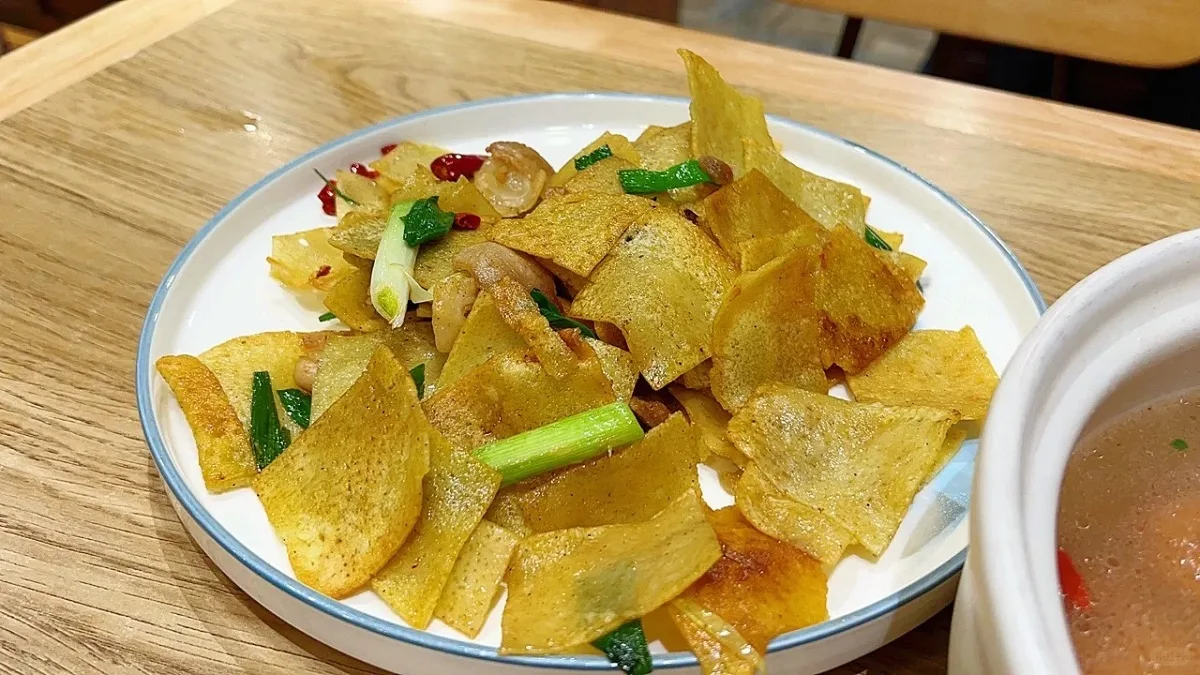Fried dousi (炒豆丝), a popular snack from Hubei Province, is created through a process of rapid stir-frying. The ingredients typically include 1000 grams of early rice, 500 grams of mung beans, 750 grams of pork (a mix of fat and lean meat), 30 grams of monosodium glutamate, 70 grams of soy sauce, 5 grams of refined salt, 2.5 grams of chili powder, 5 grams of white pepper powder, 50 grams of chopped green onions, and 425 grams of rendered lard. Once prepared, the dousi is characterized by its crispy yet resilient texture, fragrant aroma, and savory, slightly spicy flavor. This snack can also be transformed into a clear soup by boiling it in water and adding various meat toppings, offering a unique and distinctive taste.
Dousi is crafted by grinding ingredients such as mung beans and rice into a paste, spreading it into a thin layer in a pan, and then cutting it into thin strips. Hubei locals have a strong affinity for dousi, enjoying it in various forms including soupy dousi, dry dousi, and fried dousi. It is one of the three traditional snacks from Huangpi District in Wuhan (alongside Huangpi Sanxian and Huangpi Ciba) and is also a staple in the agricultural regions of the middle and lower reaches of the Yangtze River, primarily found in southeastern Hubei, southwestern Anhui, and Jiangxi.
In Huangpi, Hubei, dousi is an essential part of the New Year festivities, with households preparing it in abundance every December, filling the air with the rich aroma of tradition. One of the most renowned places for fried dousi is Lao Qianji Niurou Dousi (老谦记牛肉豆丝) in Qinglong Lane, Wuchang. Lao Qianji meticulously selects high-quality sticky rice and mung beans for grinding, paired with premium beef, earning it a reputation across the three towns for its exceptional quality and taste.


